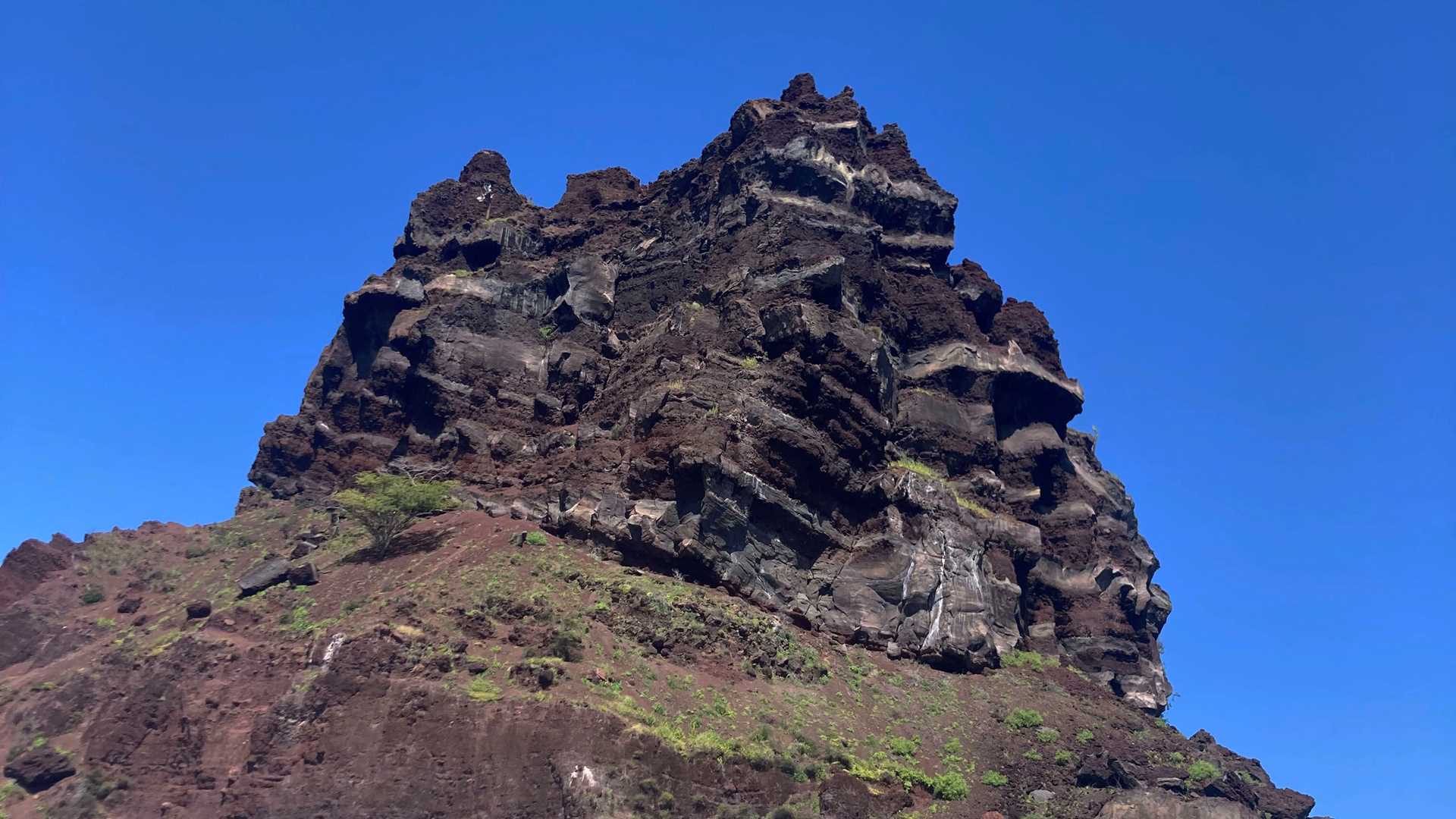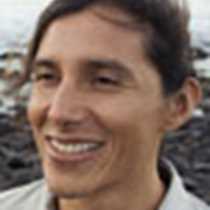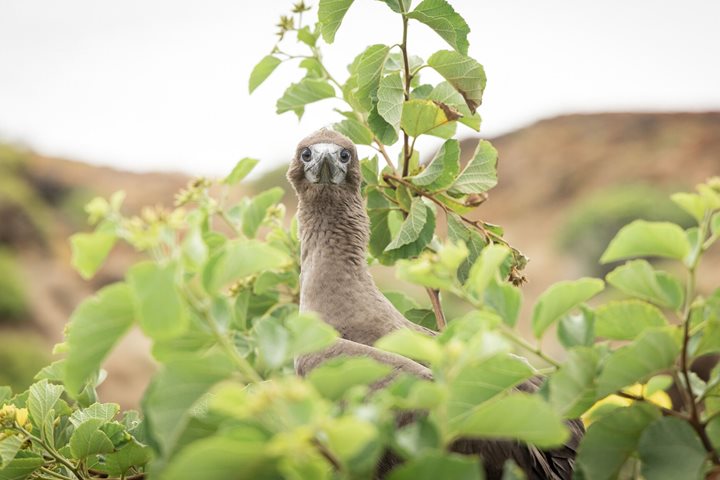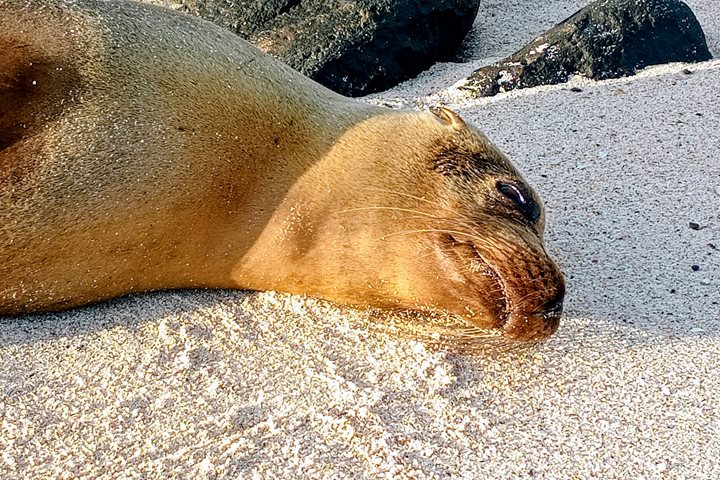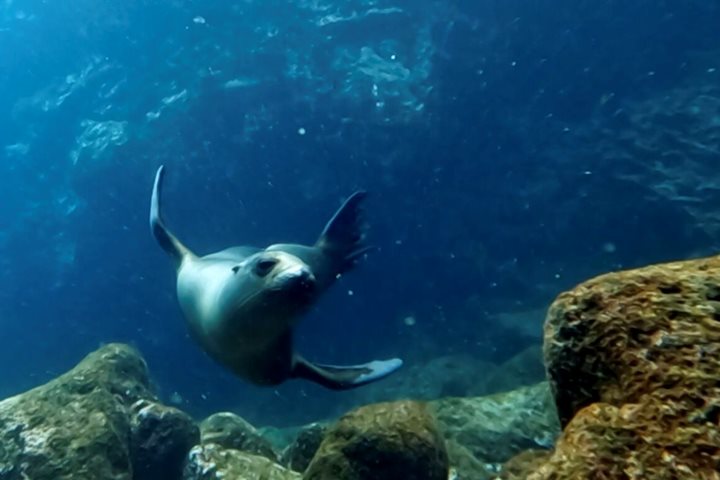Today we woke up for an early pre-breakfast walk at Espumilla Beach on Santiago Island. Here we observed a few tracks from sea turtles that came to nest on this beach. During our walk, we observed different bird species, such as blue-footed boobies, brown pelicans, and even a Galapagos hawk. After a delicious breakfast, kayakers and paddleboarders paddled along the shore, while other guests snorkeled near the shore of Buccaneer’s Cove.
In the afternoon, we visited Puerto Egas. This wonderful shoreline has great scenery. Photographers had the chance to spend some time with the sea lions and marine iguanas basking on the beach and rocks. We finished our last full day on the Galapagos Islands with a cocktail in the lounge on National Geographic Islander.

